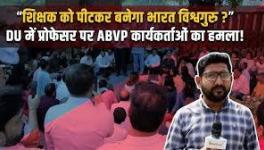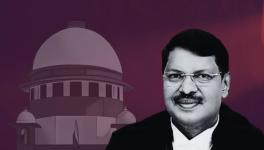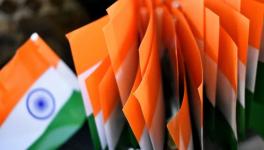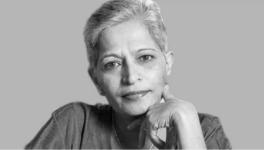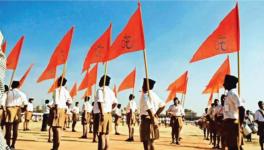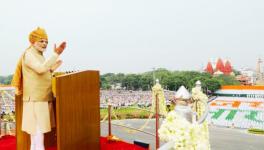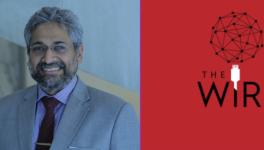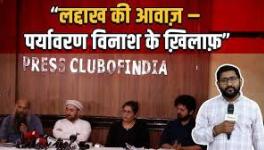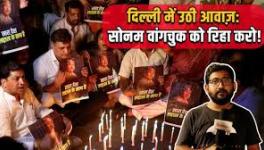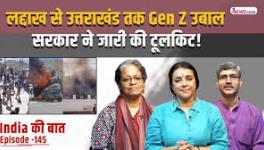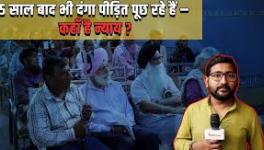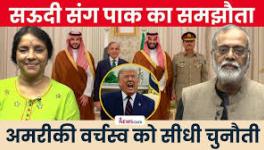RSS @100: ‘Static Content, Changing Language’
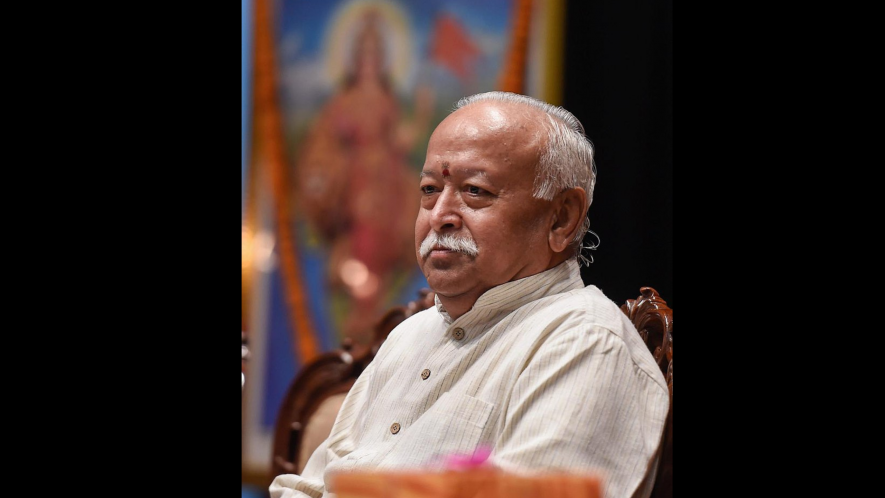
Mohan Bhagwat. Image Courtesy: Wikipedia
The Rashtriya Swayamsevak Sangh (RSS), which was formed in 1925, is completing 100 years on October 2, 2025. Its politics has been Hindutva and it aims at building a Hindu Nation. Its pledge, an oath taken by its volunteers, commits them to remain loyal to a Hindu nation.
The RSS set up shakhas at a rapid pace—a shakha (branch) is the basic unit of the organisation. In these shakhas, earlier young boys, and now people of all ages, play Indian games like Kabbadi, Kho-Kho etc. They are given ideological training, which is called shakha bauddhik (intellectual session). This training programme is very extensive and runs for varying periods. It is an exclusive male organisation, for women there is a subordinate Rashtra Sevika Samiti, note the absence of word swayam (self) here in the name of the women’s organisation.
In shakha narrations, Hindu kings like Chhatrapati Shivaji Maharaj and Rana Pratap are glorified, while Muslim kings are presented as cruel villains. The seeds for hatred against Muslims are sown here.
The RSS has a vast spread, 83,000 shakhas, lakhs of swayamsevaks (volnuteers) and hundreds of pracharaks (propagandists) have influenced the social thinking and created intense hate against Muslims, and from past few decades, against Christians as well.
The organisation’s centenary celebrations began with a three- lecture series by its sarsanghchalak (head), Mohan Bhagwat at Vigyan Bhavan in Delhi (August 26-28, 2025). Bhagwat will be giving lectures in three other metro cities as well.
Read Also: RSS Centenary: In Search of an Icon!
In his three lectures in Delhi, at one level Bhagwat talked about much discussed retirement for Modi and himself. He denied such a possibility. He said since population growth was declining, couples should adopt a three child-norm, probably, this was to counter the imaginary fear that Muslims will become a majority in the country.
The core part of Bhagwat’s lectures was to define Hindu, so as to incorporate Muslims and Christians in the definition of Hindu. We have witnessed in society the marginalisation and ghettoisation of Muslims and scattered attacks on these two communities in rising numbers during the past few decades.
In the new definition, religion is not mentioned and everybody living in this land is being called Hindu! “… The RSS chief said, “Hindavi, Bhartiya, and Sanatan are synonymous… There is content behind these words, which is not just geographical… Our DNA has been the same for the last 40,000 years.”
Defining Hindu has a long trajectory. While the word ‘Hindu’ began as a geographical category for all those living on the east of Sindhu, gradually all the religious traditions prevailing here like Brahmanism, Nath, Tantra, Siddha and Ajivikas were lumped together as Hindu as a religious category. This religious category became stronger during the past two centuries though B R Ambedkar remarked that in Hinduism Brahmanism is the dominant tradition. Today, Hindu is primarily a religious category though it did begin as a geographical one.
One recalls that Hinduism has many sects constituting it. V D Savarkar, the one to articulate ‘Two Nation theory’ in his book Essentials of Hinduism, defines Hindu as one who regards this land spread from Indus to sea as Pitrabhumi (Fatherland) and Punyabhumi (Sacred land).
Later, when Murli Manohar Joshi became the Bharatiya Janata Party (BJP) president in 1990, he called all Indians as Hindu, Muslims being Ahmadia Hindus, Christians being Christi Hindus. This was the initial attempt of imposing Hindu identity on these minorities.
Now Bhagwat takes it further to say that ‘Hindavi, Bhartiya and Sanatan’ are synonyms. These words have been used interchangeably. The word Sanatan just means eternal. In Hinduism, the holy books, the rituals and holy places are all different from those of Muslims and Christians. Christians and Muslims cannot identify with the religious term, Hindu.
To boost his point further, Bhagat classifies Hindus into four categories to incorporate non-Hindus into the ambit of Hinduism. Says he, “There are four categories of Hindus — those who consider themselves Hindus and take pride in it, those that consider themselves Hindus but do not take pride in it, those who know they are Hindu but do not even mention it, and those who don’t even consider themselves Hindus.”
This is a subtle way to impose various identity aspects of Hinduism on non-Hindus. In practice, Savarkar’s definition rules the ground reality imposed by the communal forces.
Though RSS ideologues make claims that Hinduism is tolerant and inclusive, the reality is very different. Bhagwat loftily said “A Hindu is one who believes in following their own path without demeaning others’ beliefs and respects others’ faith without disrespecting them. Those who follow this tradition and culture are Hindus...”
As a matter of fact, this lofty understanding was practiced by Mahatma Gandhi, who was murdered by the person who had his initial training in RSS shakhas, Nathuram Godse. At another level, these definitions can apply to many devout followers of different religions as well.
The claim that RSS is meant for all Hindus falls flat when we see that it is exclusively male organisation. Its major narratives about history are built around hate against Muslims and Christians. Most of the RSS ideologues and Savarkar upheld Manusmriti, which is highly discriminatory against women, Dalits and OBCs (Other Backward Classes). Bhagwat is trying to cover this up in his lectures by saying that these holy scriptures were in a particular context, while all major ideologies have different tones on this. Exclusion of other religions, low caste and women is the core hallmark of RSS ideology and practice. Muslims are not a part of RSS shakhas.
What one knows about the practice of inclusion is clear from the composition of MPs (Members of Parliament) of BJP, the electoral political progeny, in Lok Sabha. There is not a single elected Muslim or Christian MP from BJP. From the ruling party leaders to the Prime Minister downward, the hate speeches against Muslims abound. The attempt to disenfranchise Muslims in Assam in the form of NRC-CAA (National Citizens Register-Citizen’s Amendment Act) has not yet been aborted. The SIR (Special Intensive Revision of electoral rolls) in Bihar is yet another attempt at exclusion of poor and marginalised sections of society.
These three lectures, in a way, clearly outline RSS’s ongoing agenda of imposing Hindu identity on all Indians. Very cleverly, the Hindu religious identity is being presented as ‘national’ identity.
The writer is a human rights defender and a former professor at the Indian Institute of Technology, Bombay. The views are personal.
Get the latest reports & analysis with people's perspective on Protests, movements & deep analytical videos, discussions of the current affairs in your Telegram app. Subscribe to NewsClick's Telegram channel & get Real-Time updates on stories, as they get published on our website.









